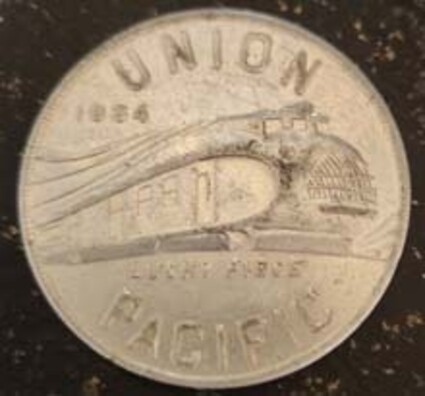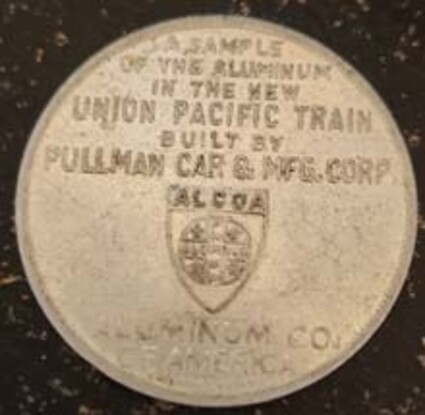Editor's Notebook
January 18, 2024

Saturday evening I was looking at a Jan. 18, 1934, issue of the Lawrence Locomotive, I was surprised to read a story the Locomotive editor had written about a good luck piece that appears to have been identical to the one lost in one of my desk drawers. Naturally, I wondered what had become of that lucky piece. Does a member of the editor's family still have it or was it tossed out in a cleaning spree?
The story said the Union Pacific Railroad had one million of the pieces made to mark the introduction of the railroad's streamliner passenger service. The pieces were said to be made of the same aluminum alloy as the cars built for the streamliner.
The alloy was said to be as strong as steel but only one-third the weight.
The first of the coins were distributed to newspaper editors. If the Lawrence editor got one, I suspect all the Nuckolls County editors got one and there were at least seven of us that year. I know of at least three that are currently in Nuckolls County and there may be more. After the editors received their lucky pieces, many were given to school children. Finally the last of the token-like pieces were given to visitors when the streamliner was on an introductory exhibition tour.
When it comes to current Nebraska editors, I'm among the longest serving for I have been the editor of The Express for more than 53 years but I'm not near old enough to have been the original recipient of one of the pieces.
A friend and work associate, Martin Pohlman, gave me the lucky piece several years ago. As a rail fan, Marty collects that kind of thing and since he had more than one of the coins, he shared with me.

Until now I hadn't considered how old the token piece is. It is about the size of the original silver dollars but much lighter.
As I think about the folks who have saved the medallions for more than a century, I regret I didn't keep my official Burlington Northern hyphen exterminator.
Soon after the merger of the Chicago, Burlington and Quincy Railroad with the Great Northern and Northern Pacific railroads to form the Burlington Northern, a Santa Fe freight train entering the Superior yard, derailed as it crossed the diamond near the First and Hartley street intersection.
I took a picture of the derailed train and wrote a story for this newspaper. In doing so, I made the mistake of hyphenating Burlington-Northern.

A few days later I received in the mail a fancily packaged triangular file with the instructions on how to use the file to remove the hyphen key from my typewriter.
Apparently, I wasn't the only person to mistakenly insert a hyphen between Burlington and Northern.
While I didn't file the hyphen off, the file did it's job. I haven't been guilty of adding a hyphen between Burlington Northern since. However, in casual conversation I seldom call the railroad by its correct name.

My Grandfather Wrench was a retired Chicago, Burlington and Quincy railroad employee. When speaking about the railroad he often called it the Q and I tend to do the same thing. Not sure why it was the Q but I suspect it had something to do with the telegraph the railroad used to use to keep track of the trains. I'm guessing rather than tapping out the railroad's fullname. The telegraph operators substituted Q which they could make on the telegraph key with two longs, a short and one long.
The Q signal also has ties to British royalty and perhaps Grandfather thought the CB&Q was the queen of railroads. Back when the queen of England traveled by ships a long,long,short, long blast on the ship's horn was a signal for other ships to get out of the way of the ship carrying the queen. In this country engineers often sound the Morse code "Q" as they approach a crossing.




Reader Comments(0)